When I was younger, I loved to hunt alone. At that point in my life, I was admittedly selfish and didn’t want to compromise my opportunities for success by sharing them with another hunter. Additionally, I’ve always been an introvert at heart, and my alone time in the woods was critical to my sanity.
As gray hair has crept into my beard, I’ve changed that outlook. This change has made me realize how most hunters approach their time afield, and it’s made me keenly aware of the importance of party applications and how they work. Failure to understand how party applications work can literally eliminate you from the draw. On the other hand, a good strategy can put tags in your pocket and meat in your freezer.
As always, our goal here at Huntin’ Fool is to help you go on more hunts with better information. With that in mind, my desire here is to help you know how and when to party.
Party Applications 101
A party application refers to multiple hunters who apply for limited-entry or controlled hunts on a single application. The benefit of a party application is that if the application is selected, all of the party members are issued tags, and nobody is left out. The number one question we get when it comes to party applications is whether your draw odds are better or worse when you apply as a party. The answer to that question isn’t as simple as yes or no, but there are a few general rules:
- First, your draw odds are always worse when applying as a party for hunts that have very few tags.
- Second, if you’re applying in a draw system that has points, your odds are reduced by the party member who has the fewest number of points in the group. In extreme cases like Colorado, the entire group’s points will be reduced to match those of the member who has the fewest points. In most cases, your points will be averaged across the group.
- Third, your draw odds get increasingly worse as the number of applicants in your party increases (except for Wyoming elk, deer, and antelope tags).
- Finally, as the tag quota increases for the hunt your party is applying for, the potential negative impact is reduced. Mathematically speaking, the potential negative impact can be reduced to next to nothing when available tag numbers are very high.
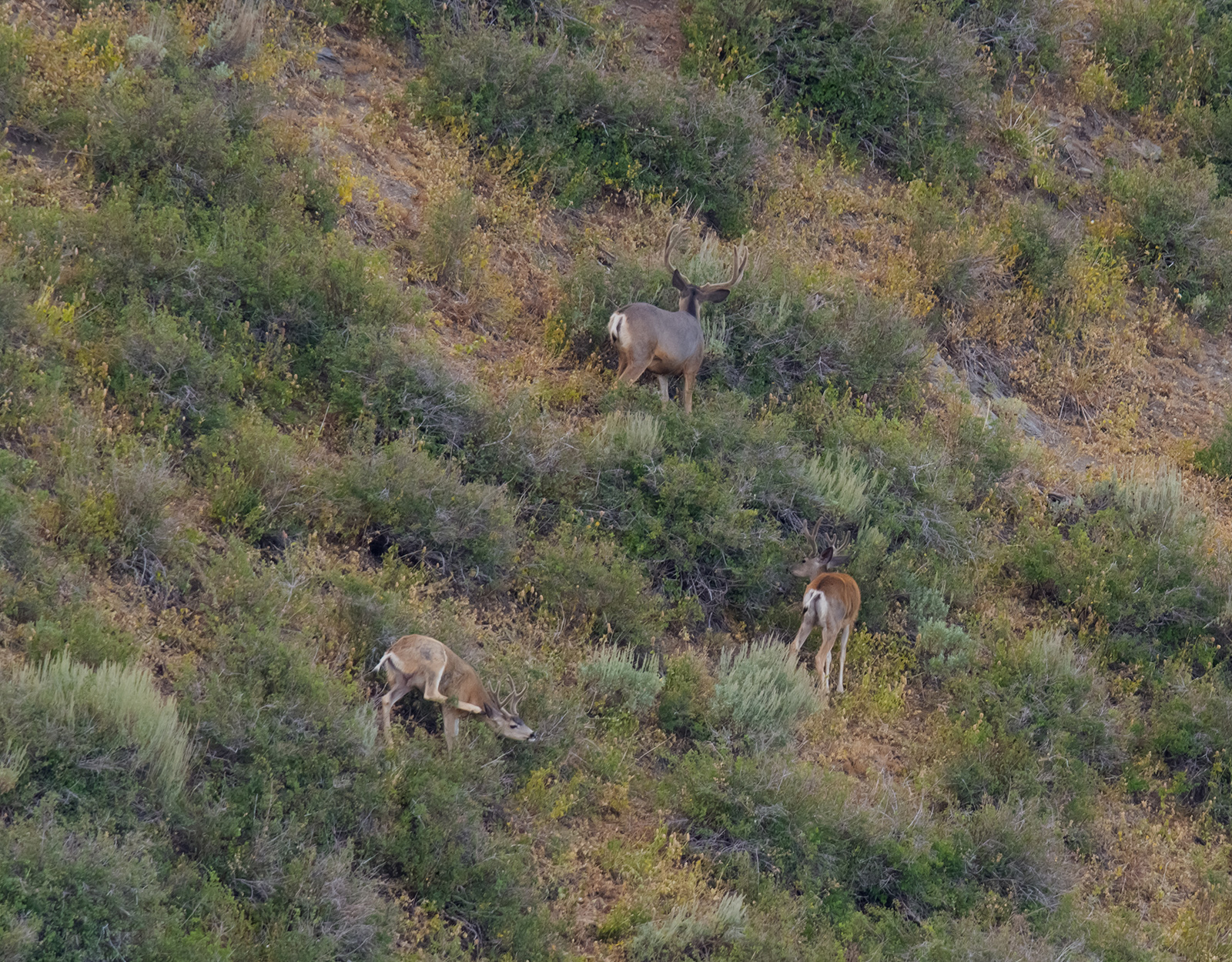
To understand this better, it’s important to note that your party application will be assigned a single random number for the draw, regardless of the number of applicants in your party. Many hunters erroneously believe that if they have multiple hunters on a party application, they will each have an opportunity to have a separate random number in the draw, thus improving the party’s odds of getting a low random number. However, that’s simply not the case. Every state looks at the draw from an “applications” point of view and not a “quantity of applicants” point of view. Thus, each application, whether it is for a party or for an individual, stands alone when the computers begin assigning random numbers to the applications for the purposes of awarding tags.
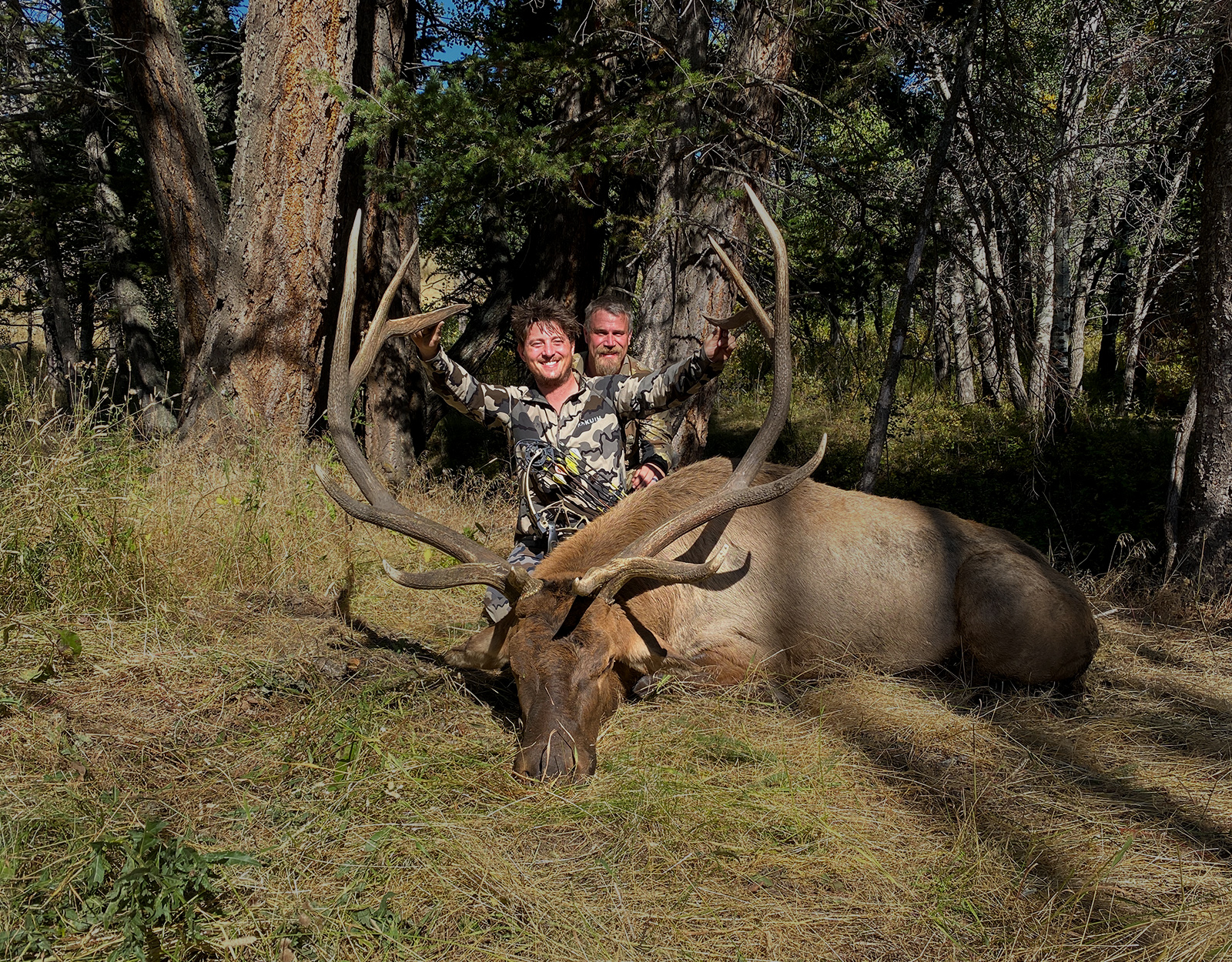
With that in mind, a party application effectively reduces the number of applicants’ individual chances of getting a low random number. Additionally, the vast majority of states will not over-allocate tags once a tag quota has been established. For party applications, this means that there is a risk of your application being selected when there is still one or more tags that remain available in the quota, but there are not enough tags left to award to ALL the party members. In all states except Wyoming, this would result in your application being thrown out and the remaining tag(s) being issued to the applicant(s) who are next in line until the quota has been filled.
As mentioned, Wyoming makes an exception to this rule for elk, deer, and antelope because they will over-allocate tags when a party application is selected, even if there is only a single tag that remains available. For this reason, the risk of applying for these species as a party is greatly reduced in Wyoming, and I highly encourage those who want to travel and hunt in groups to take advantage of this loophole.
Although I’ve painted a relatively bleak picture for party applications thus far, I want to continue to point out that when tag numbers are abundant, the potential negative consequences drop drastically, and I’d still encourage party applications more often than not. It’s just important to be aware of party application limitations.
When To Avoid Party Applications
In general, I try to avoid party applications for any hunt where my party size could impact the simple draw odds by 10% or more. For example, if I want to apply with a party of three total hunters and I’m applying for a hunt that has 20 total tags available, my potential impact on that quota would be 3/20 or 15%. In that case, I’m unlikely to try the party route. Look closely at the available tag numbers for the hunt you want, as well as the group point process in the following table to see if applying as a party is in your best interest.
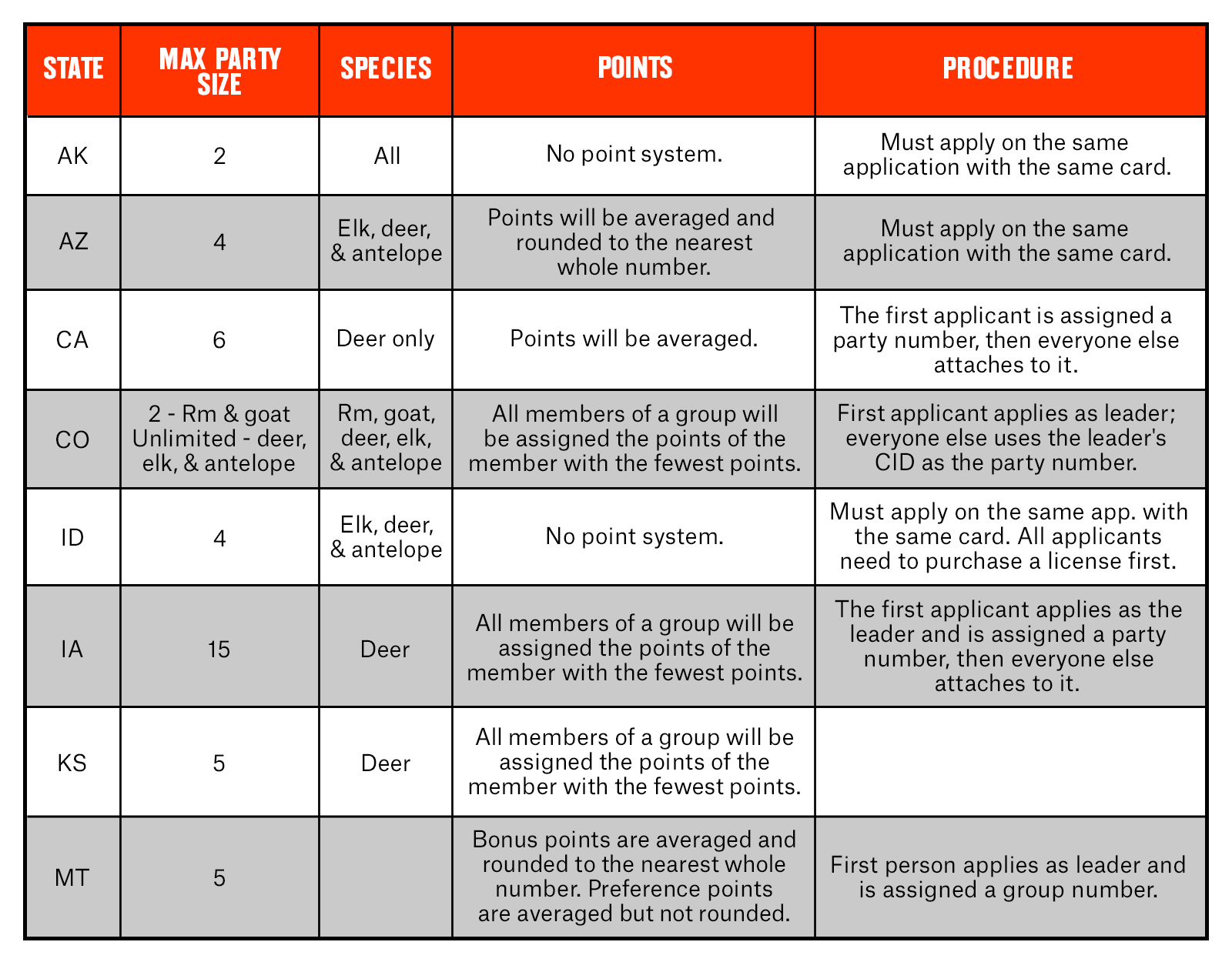
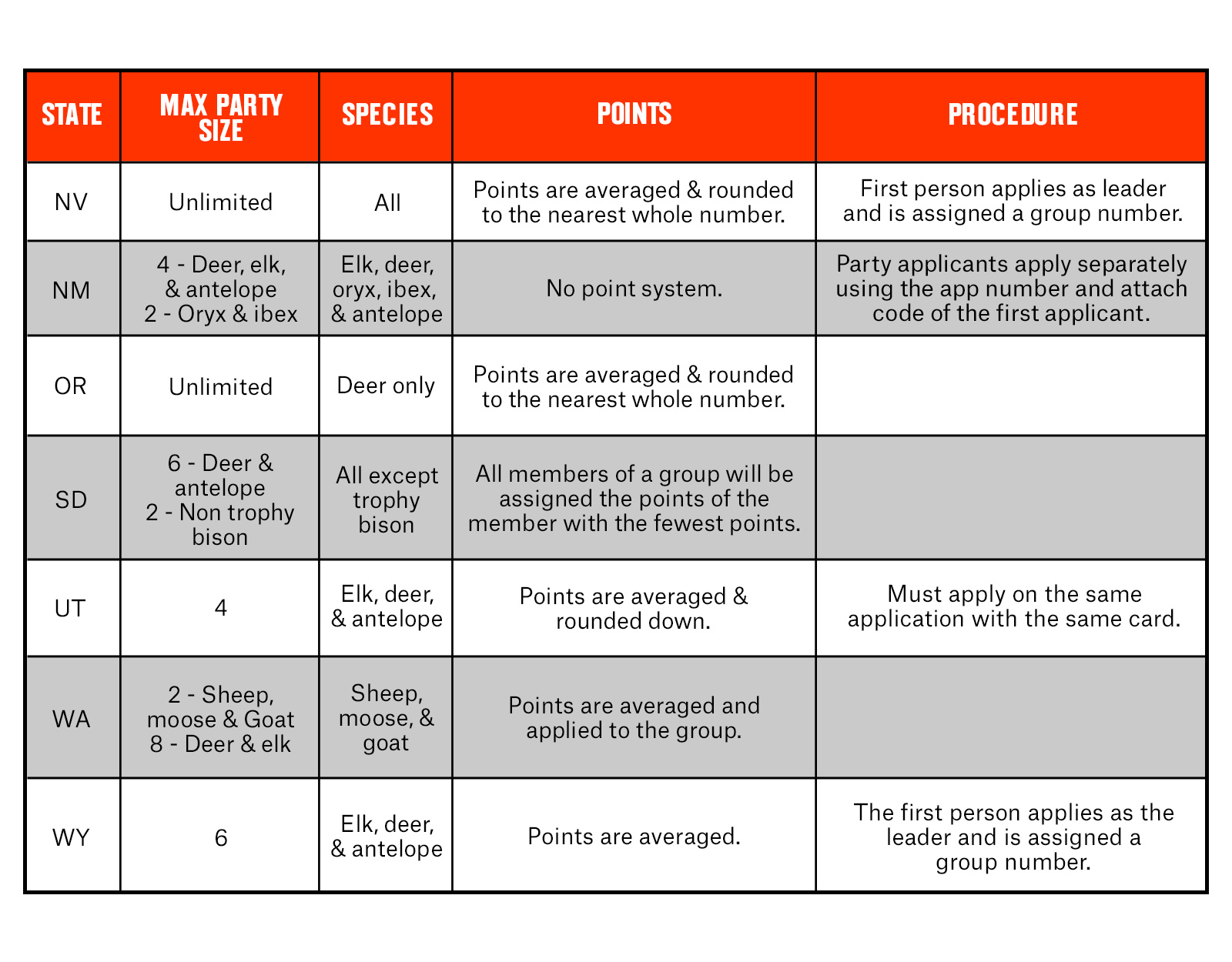
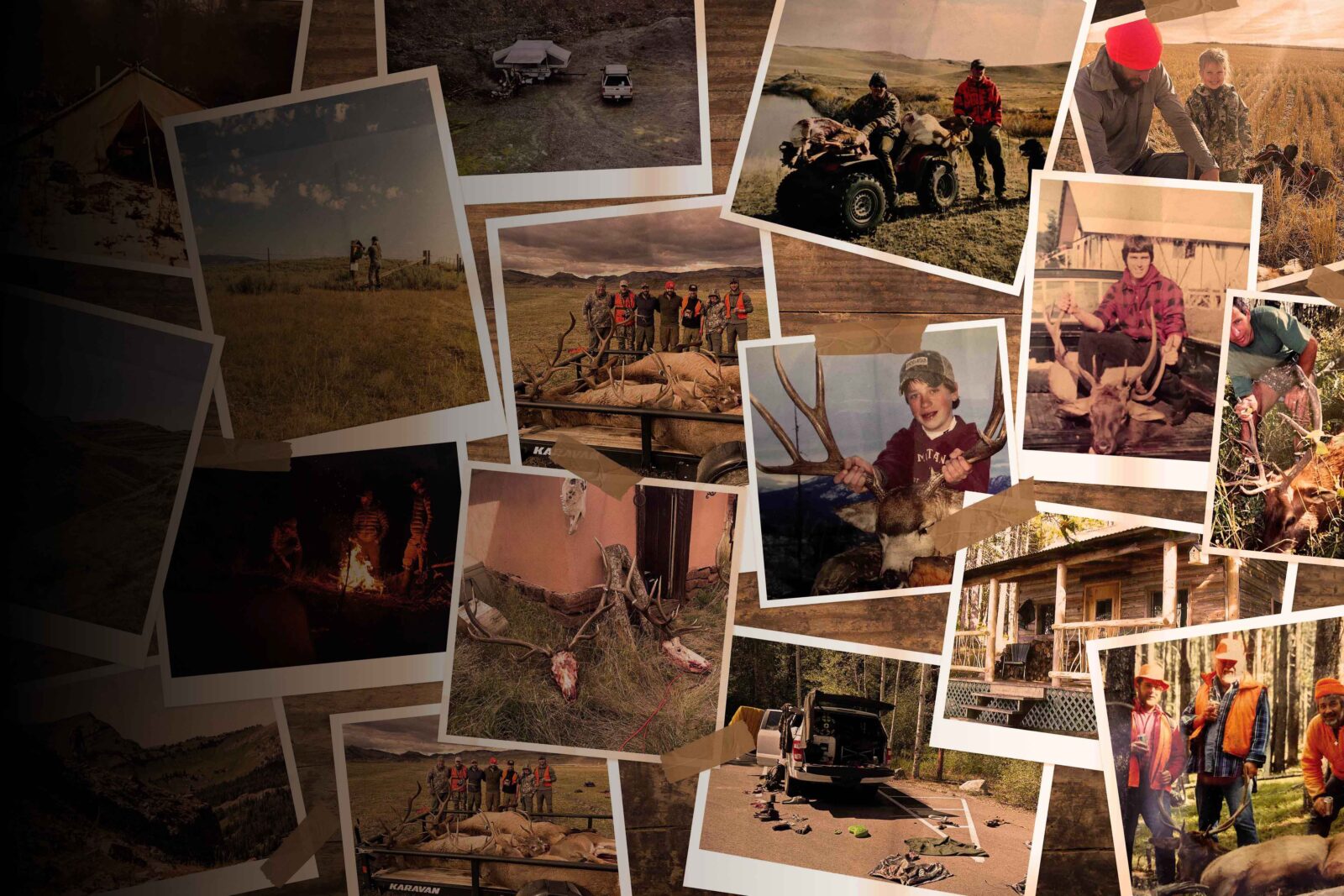

Your Complete System for Securing Tags
Whether you’re chasing a once-in-a-lifetime hunt or just looking to fill the freezer, your season starts with onX Hunt’s application tools—all included with an Elite Membership:
- Hunt Research Tools: Draw odds, tag trends, and harvest stats for 11 western states (Washington is not yet available) to help you decide where to apply.
- Huntin’ Fool: In-depth insights to navigate state-specific systems and build better strategies.
- HuntReminder: Text and email alerts so you never miss a deadline.
One membership, every tool you need to make 2026 the year.
